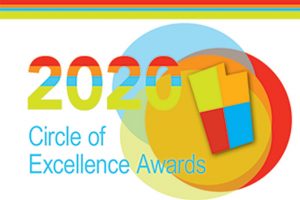By The Utah Association of Public Charter Schools
According to a new questionnaire distributed by the Utah Association of Public Charter Schools, candidates for Utah state offices want to give public education more flexibility in how they structure their schools and classrooms. Not only is their strong support for more charter schools, but the candidates who responded want to reduce the restrictions on how schools can use the funding the state provides, and want to give schools more options in how they measure student achievement.
In Utah, state officials — the legislature, the governor, authorizers and the state board of education — create the legal and regulatory framework for most charter school issues. To help the public better understand how candidates for various statewide elected offices feel about education generally, and charter school issues more specifically, UAPCS emailed a survey to all candidates for the legislature, the governor, U.S. House of Representatives and the state board of education. The survey had 15 questions; 48 candidates responded.
For many of the questions, the candidates responded almost unanimously. For example, all but one candidate replied, “Yes” to the question, “Do you support a parent’s right to choose the best public school in their judgment for their children?” Similarly, every candidate replied, “No,” to the question, “Do you support reducing the number of existing charter schools?”

A striking, bipartisan majority of candidates oppose restricting the number of new charter schools in Utah. Nine of 12 Democrats and 24 of 25 Republicans oppose limiting the number of new charter schools. Only eight total candidates want to limit the number of new charter schools in Utah.

Other questions evoked significant differences of opinion between candidates, even between candidates from the same party. For example, 32 candidates said Utah should use a “menu of tests” to “evaluate LEA performance statewide,” while 13 candidates said Utah should use “one statewide test.”
Breaking those groups down by party gives an even more nuanced picture. Of the 12 Democratic candidates, seven preferred a menu of tests, while five preferred one statewide test. On the Republican side, 19 candidates preferred a menu of tests, and six want a single statewide test. Among the 11 candidates not affiliated with the two major parties, only three preferred one statewide test; the other eight support a menu of tests.
In perhaps the most intriguing set of responses, a substantial majority of candidates prefer to relieve schools of the restrictions on how schools can use the funding the state provides them. Overall, 38 candidates prefer that option, while 10 prefer to keep the limits on those funding streams intact.
When broken down by party, the picture shifts a bit. The overwhelming number of Republican candidates (23 of 25) prefer to ease funding restrictions. Among the Democratic candidates, opinions are much more closely divided. Five candidates want to keep existing restrictions, while seven prefer to ease them. Among candidates not affiliated with the two major parties, three prefer to keep existing restrictions, while eight want to ease them.

It is important to note that this questionnaire is not scientific. Some candidates responded that the possible responses to some questions were narrower than their more nuanced positions allow. To some degree that critique is fair, although every survey suffers from the same limitation, as does every legislative vote: legislators must vote “Aye” or “Nay.” Governors either allow a passed bill to become law or they veto it.
IRS regulations prohibit a 501(c)(3) nonprofit like UAPCS from engaging in election efforts. However, those regulations encourage nonprofits to educate the public about important issues, such as charter schools and education. UAPCS does not endorse candidates, but we do help the public and candidates better understand each other. We have published the full responses of each candidate, sorted by candidate, on our website, www.utahcharters.org.
The Utah Association of Public Charter Schools
This story appears in Issue 3 2020 of Charterology Magazine.






